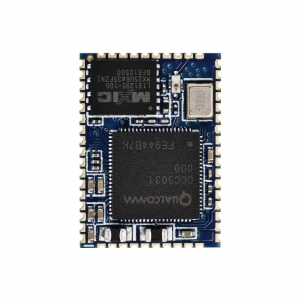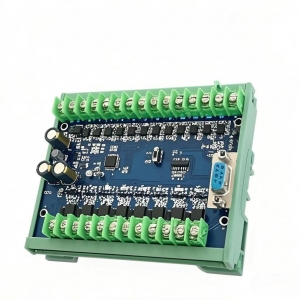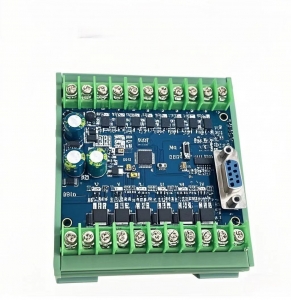How many do you know about the five principles of patent application?
- 2020-07-18 11:22:00
- admin Original
- 1830
In China, the State Intellectual Property Office (SIPO) is responsible for the administration and management of the national patent work, the unified acceptance and examination of patent applications, and the grant of patent rights according to law. It should follow the principles of patent examination, patent application, patent application, patent application and patent application.
According to the different types of patent applications, the patent law stipulates different requirements for the application documents that should be submitted; at the same time, different examination systems are adopted for different types of patents, including the early public delayed examination system for invention patent applications, and the formal examination system for utility model and design patent applications.
1、 Principle of unified acceptance and review
In China, patent application and examination follow the principle of unified acceptance and examination. Article 3 of the patent law stipulates that the administrative department for patent under the State Council shall be responsible for the administration of patent work in the whole country, uniformly accept and examine patent applications, and grant patent rights according to law.
At present, as the administrative department of patent under the State Council, the State Intellectual Property Office entrusts the Patent Office of the State Intellectual Property Office (hereinafter referred to as the Patent Office) to accept and approve patent applications. The State Patent Office makes various decisions in the name of the State Intellectual Property Office. The State Intellectual Property Office shall set up a patent reexamination board to be responsible for the reexamination and examination of the request for invalidation and making decisions.
2、 The principle of oneness
Oneness refers to a patent application * * in an invention creation, that is, an invention patent application * * in an invention; a utility model patent application * * in a utility model; a design patent application * * in a design used in a product.
According to the principle of oneness, two or more invention creations should not be put forward in one patent application, but should be filed separately. If an application for a patent does not conform to the oneness requirement, the applicant shall modify the application documents (including case by case processing) to make it meet the requirement of oneness, otherwise, the patent right cannot be granted.
There are two main reasons why a patent application should meet the requirements of oneness
**For economic reasons, that is, in order to prevent the applicant from paying for only one patent, he or she can obtain the protection of several different invention or utility model patents;
Second, technical reasons, that is, in order to facilitate the classification, retrieval and examination of patent applications. This principle is applicable to all countries in the world that have implemented patent system.
Article 31 of the patent law and Articles 34 and 35 of the detailed rules for the implementation of the patent law provide for the unilaterality exceptions in the following cases: (1) two or more inventions or utility models belonging to a general inventive concept may be filed as one application. However, the above-mentioned inventions or utility models shall be technologically interrelated and contain one or more identical or corresponding specific technical features, wherein the specific technical features refer to the technical features that contribute to the prior art by considering each invention or utility model as a whole. (2) Two or more similar designs of the same product, or two or more designs of a product of the same category and sold or used in sets, may be filed as one application. Here, we should pay attention to the following two problems: * *. If a multi thought similar design of the same product is filed as an application, other designs of the product shall be similar to the basic design specified in the brief description, and the number of similar designs in a patent application for design shall not exceed 10; Second, the so-called two or more designs of products of the same category and sold or used in sets refer to the fact that each product belongs to the same category in the classification table, and is habitually sold or used at the same time, and the design of each product has the same design concept.
3、 Principle of prior application
The so-called principle of prior application means that if two or more applicants apply for a patent for the same invention creation, the patent right shall be granted to the applicant.
Corresponding to the application principle is the principle of prior invention, that is, if two or more applicants apply for a patent for the same invention creation, the patent right shall be granted to the person who has completed the invention creation. From the perspective of encouraging invention and creation, this principle takes precedence over the principle of first application.
4、 Priority principle
Priority is an important principle of Paris Convention for the protection of industrial property. According to the Paris Convention for the protection of industrial property rights, any person who applies for the registration of a patent for invention, utility model or design in one Contracting State shall, in order to file an application in other countries, enjoy priority within a prescribed period of time.
Priority includes foreign priority and domestic priority.
After the applicant has filed a patent application for his invention creation in one country for several times, within the period of priority, he / she applies to another country for a patent on the same subject matter, and enjoys the priority according to the relevant national laws and regulations, which is called foreign priority, that is, international priority.
If, within a certain period of time after the applicant has filed a patent application for the same invention creation in a certain country, and has the right of priority according to law, it is called the domestic priority, that is, the domestic priority.
The meaning of priority:
First, during the period of priority, the invention creation will not lose its novelty due to any act of making the same invention and creation known to the world;
Second, it can exclude others from filing patent applications for the same invention creation after the priority date;
Third, it provides time for the applicant to investigate the market. The applicant can use the time of priority to carefully examine the market in which the patent can obtain income, creating time for improving economic income.
Priority period:
Article 29 of the patent law stipulates that the applicant shall, within 12 months from the date of filing the patent application for invention or utility model in a foreign country, or within 6 months from the date of filing the second patent application for a foreign design abroad, file a patent application for the same subject matter in China in accordance with the agreement signed between the foreign country and China or the international treaties to which both countries are parties, or in accordance with mutual recognition The principle of priority can enjoy priority.
If the applicant, within 12 months from the date of filing the patent application for the invention or utility model patent for the same subject matter to the State Patent Office, he / she may enjoy the right of priority.
Where the applicant claims the right of priority, he / she shall make a written declaration at the time of application according to law, and shall submit copies of the patent application documents for * * times within 3 months; if the applicant fails to make the written declaration or fails to submit the copy of the patent application documents within the time limit, it shall be deemed as claiming the right of priority.
5、 Confidentiality review principle
Article 20 (1) of the patent law stipulates that any entity or individual who applies for a patent for an invention or utility model completed in China in a foreign country shall report to the patent administration department under the State Council for confidential examination in advance.
No patent right shall be granted to an invention or utility model which, in violation of the provisions on confidentiality examination, applies for a patent in China.
Where any entity or individual applies to a foreign country for a patent for an invention or utility model completed in China, it shall request the State Patent Office for confidential examination in one of the following ways:
(1) Where an application for a patent is directly filed with a foreign country or an international patent application is filed with the relevant state organ, a request shall be submitted to the State Patent Office in advance, and the technical proposal shall be described in detail;
(2) After applying for a patent to the State Patent Office, it intends to apply for a patent in a foreign country or file an international patent application with a foreign institution, and submit a request to the state patent office before submitting an international patent application to a foreign institution;
(3) Where an international patent application is filed with the State Patent Office, it shall be deemed that the request for confidential examination has been made at the same time.
-
About
Founded in 2013,more than ten years of development history and technology precipitation,gathered numbers of senior engineers with rich experience in hardware and embedded software design. Advanced electronic circuit design,PCBA design,embedded system development,intelligent controller,wireless Bluetooth solution, IOT and other technical services.
-
Fast navigation
IOT Solutions Enterprise Announcement Smart Home Living Enterprise News Intelligent Toy Solution Original Project Energy Saving & Eco-friendly Industry information -
Contact
Tel.:(86)755-29653709
Fax:(86)755-29653709-803
E-mail:info@easy-core.com
Address:4/F, Bldg.B, Hongxinbao IZ.,
No.6 Feimei RD, Pingshan Dist., Shenzhen.




